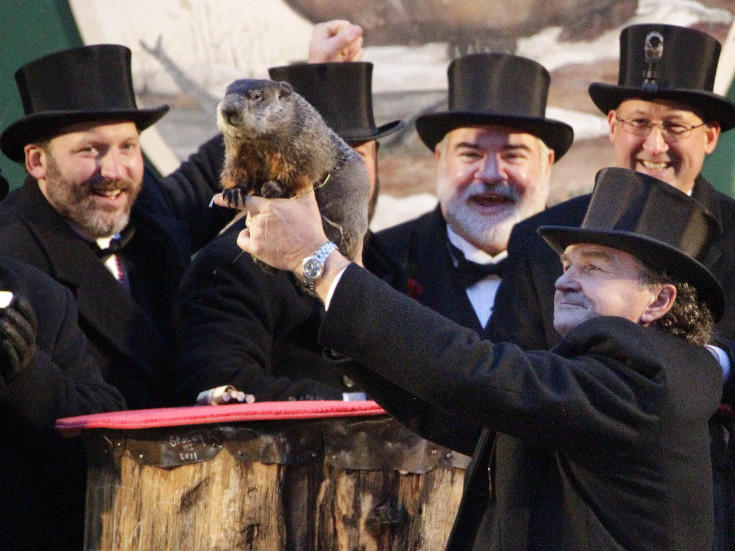Groundhog Day fails the test of time
Punxsutawney Phil is hoisted above the heads of onlookers as he predicts the outlook for the winter.
Annually on Feb. 2, audiences from around the country gather in Punxsutawney, Pennsylvania, to watch aptly named groundhog, Punxsutawney Phil, emerge from his hibernation and give his opinion regarding the seasonal changes: how much longer will winter last?
First recognized in 1887, its roots stretch much farther than that. The holiday is said to have originated from an ancient Christian tradition called Candlemas. During Candlemas, clergy would hand out candles to anybody who needed them for warmth through the winter. These candles would give an indication of how long the winter will last.
This tradition was short-lived, as German immigrants introduced the hedgehog: an animal that could supposedly predict the weather. German settlers in Pennsylvania pledged to continue their hedgehog tradition, only switching animals from a hedgehog to a more prevalent animal: the groundhog.
Groundhogs hibernate, like many mammals, starting in late fall and going throughout the winter. The common misconception is that groundhogs awake from their hibernation in Feb, which is why Groundhog’s Day is in early Feb. However, only the males wake up during that time, in order to mate, before going back into their underground burrows until March.
In 1887, the Punxsutawney Groundhog Club declared that there was only one groundhog in all of America that was suited to predict the weather: Phil. From there, the name Punxsutawney Phil was born. While nobody actually knows how many Punxsutawney Phils there have been, there are myths that say that there has only been one, who has been revitalized by drinking the “elixir of life.”
Because of a groundhog’s lifespan, six to eight years, it is funny that people believe they have seen the same groundhog for the last 130-plus years. Instead, 16 is closer to an accurate estimate for the number of Phils we have seen throughout the years.
A traditional Groundhog’s Day celebration occurs at Gobbler’s Knob in Punxsutawney, Pennsylvania. There, tens of thousands of spectators gather around to watch Punxsutawney Phil emerge from his burrow.
Will he see his shadow? That is the age-old question that supposedly decides our fate for the rest of the winter. The almost universally accepted fact about groundhogs is that they become frightened by their own shadows. So on Feb. 2, if Phil comes out of his cave only to turn around immediately and go back, he will have decided that winter will last for six more weeks. If Phil does not see his shadow, which rarely ever happens, spring weather is “right around the corner.”
In my opinion, ‘right around the corner’ is pretty ambiguous. What does ‘around the corner’ mean? Two days? A week? Perhaps, ‘right around the corner’ means six weeks. On the other hand, if the groundhog sees his shadow, he is not telling anybody anything. He could have been scared off by anything; the crowd, the temperature, maybe even a rock. There is no definitive way to prove whether or not the groundhog actually saw his shadow.
The statistics cement this fact, as Phil has not been very accurate during his tenure. According to livescience.com, Phil has only been accurate in his predictions 39% of the time since numbers were first recorded in 1969.
When looking at a calendar, you can see that Groundhog Day falls on Feb. 2. Furthermore, the calendar says that spring officially starts on March 19 or 20. Counting the number of weeks between the dates, there are about six weeks, give or take a few days, between Groundhog Day and the start of spring.
That’s where many people feel that Groundhog Day does not make any sense. The Punxsutawney Groundhog Club was most likely going for some comedic irony in establishing this celebration, but it’s been more than 130 years, the joke is no longer funny.
In conclusion, the lack of attendance, as well as the overused jokes, make the Groundhog day celebration, and the holiday in general, in all its glory, pointless. There should not be a day worshiping a groundhog, who does nothing but tell people the obvious every year: six more weeks of winter.

Currently a senior at the Math and Science High School at Clover Hill, Cabot is very much interested in the world of sports. He is currently in his second...







